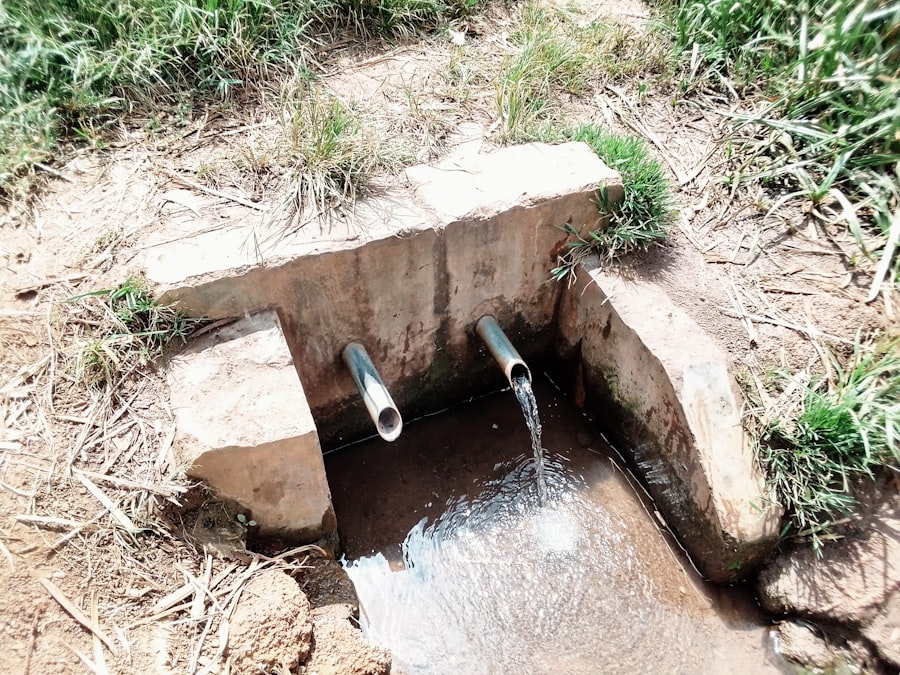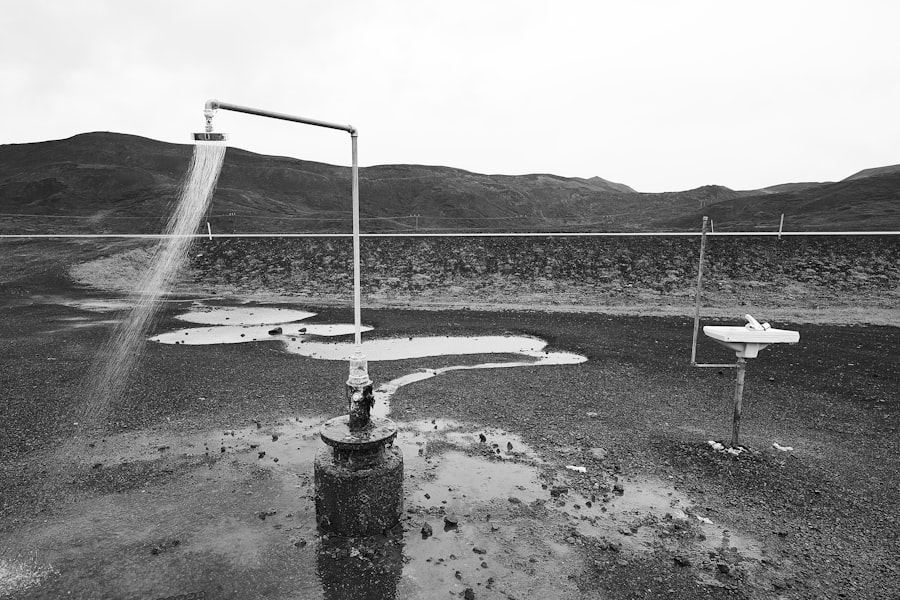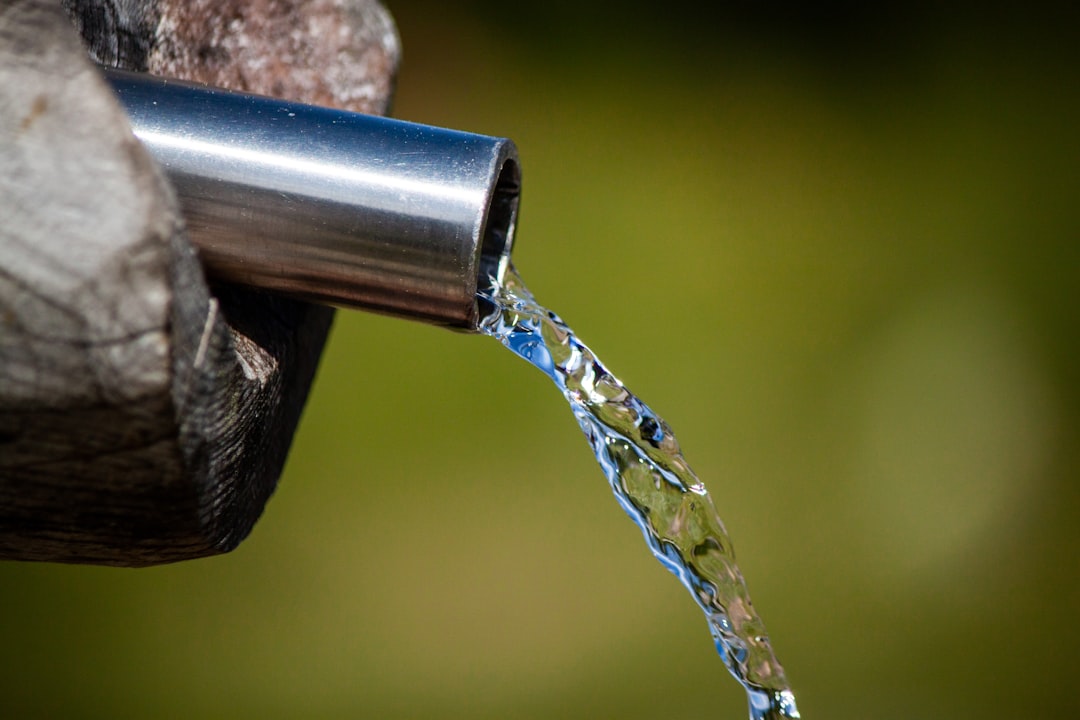Water management in the Great Plains is a critical issue that has garnered increasing attention over the years. This vast region, which stretches across parts of Canada and the United States, is characterized by its unique climate and geography. The Great Plains are known for their expansive grasslands, agricultural productivity, and significant water resources, including rivers, lakes, and aquifers.
Effective water management practices are essential to ensure the sustainability of this vital resource for future generations. The importance of water management in the Great Plains cannot be overstated.
As agriculture remains a cornerstone of the economy in this region, the demand for water continues to rise. Farmers and ranchers rely heavily on irrigation to support crop production and livestock operations. Additionally, urban areas are expanding, further increasing the competition for water resources.
Therefore, a comprehensive approach to water management is necessary to balance the needs of agriculture, industry, and communities while protecting the environment.
Key Takeaways
- Water management is crucial in the Great Plains due to its semi-arid climate and reliance on agriculture.
- Challenges of water management in the Great Plains include water scarcity, soil erosion, and depletion of aquifers.
- Sustainable agriculture practices such as no-till farming and crop rotation can help conserve water in the Great Plains.
- Drip irrigation systems and soil moisture monitoring technology are effective techniques for water efficiency in the Great Plains.
- Rainwater harvesting, water reuse, and recycling strategies are important for water conservation in the Great Plains.
Importance of Water Management in the Great Plains
The significance of water management in the Great Plains extends beyond mere resource allocation; it encompasses environmental stewardship and economic viability. The region’s agricultural sector is heavily dependent on consistent and reliable water supplies. With crops such as wheat, corn, and soybeans dominating the landscape, any disruption in water availability can lead to severe economic repercussions for farmers and local economies.
Thus, effective water management practices are crucial for maintaining agricultural productivity and ensuring food security. Moreover, water management plays a vital role in preserving the ecological integrity of the Great Plains. The region is home to diverse ecosystems that rely on healthy water systems.
Wetlands, rivers, and lakes provide habitats for numerous species of wildlife and contribute to biodiversity. By implementing sustainable water management practices, stakeholders can help protect these ecosystems from degradation caused by over-extraction, pollution, and climate change. Ultimately, responsible water management fosters a harmonious relationship between human activities and the natural environment.
Challenges of Water Management in the Great Plains

Despite its importance, water management in the Great Plains faces numerous challenges that complicate efforts to ensure sustainable use of this precious resource. One of the primary issues is the variability of precipitation patterns. The region experiences periods of drought interspersed with heavy rainfall, leading to fluctuations in water availability.
This unpredictability makes it difficult for farmers and water managers to plan effectively for irrigation and other water needs. Additionally, groundwater depletion poses a significant threat to water management in the Great Plains. Many agricultural operations rely on aquifers for irrigation, leading to over-extraction that can result in declining water levels.
This depletion not only jeopardizes agricultural productivity but also affects the long-term sustainability of water resources in the region. Furthermore, pollution from agricultural runoff and industrial activities can contaminate surface and groundwater sources, further complicating water management efforts.
Sustainable Agriculture Practices for Water Conservation
| Practice | Water Conservation Benefit |
|---|---|
| Conservation Tillage | Reduces soil erosion and water runoff |
| Crop Rotation | Improves soil structure and reduces water usage |
| Cover Crops | Reduces evaporation and improves soil water retention |
| Drip Irrigation | Minimizes water waste by delivering water directly to plant roots |
| Agroforestry | Increases water infiltration and reduces soil erosion |
To address the challenges of water management in the Great Plains, adopting sustainable agriculture practices is essential. These practices focus on optimizing water use while minimizing environmental impact. One effective approach is crop rotation, which involves alternating different crops in a field over time.
This method not only improves soil health but also enhances water retention and reduces the need for irrigation. Another sustainable practice is the use of cover crops, which are planted during off-seasons to protect soil from erosion and improve moisture retention. Cover crops can help reduce runoff and increase infiltration rates, allowing more water to reach the root zones of subsequent crops.
By integrating these practices into their farming operations, producers can significantly reduce their reliance on irrigation while promoting healthier ecosystems.
Irrigation Techniques for Water Efficiency
Efficient irrigation techniques are crucial for maximizing water use in agriculture while minimizing waste. Traditional flood irrigation methods can lead to significant water loss through evaporation and runoff. In contrast, modern irrigation systems such as center pivot irrigation and subsurface drip irrigation offer more precise control over water application.
These systems deliver water directly to the root zone of plants, reducing evaporation losses and ensuring that crops receive adequate moisture. Additionally, scheduling irrigation based on weather forecasts and soil moisture levels can further enhance efficiency. By utilizing tools such as weather stations and soil moisture sensors, farmers can make informed decisions about when and how much to irrigate.
This data-driven approach not only conserves water but also promotes healthier crop growth by preventing over- or under-watering.
Water Reuse and Recycling Strategies

Water reuse and recycling strategies present innovative solutions for addressing water scarcity in the Great Plains. These approaches involve treating wastewater for various uses, including agricultural irrigation, industrial processes, and even potable water supply in some cases. By repurposing treated wastewater, communities can reduce their reliance on freshwater sources while ensuring that essential needs are met.
Implementing greywater systems is one effective method for promoting water reuse at the household level. Greywater refers to wastewater generated from sinks, showers, and washing machines that can be treated and reused for irrigation or toilet flushing. By encouraging homeowners to adopt greywater systems, communities can significantly reduce overall water consumption while promoting sustainable practices.
Implementing Drip Irrigation Systems
Drip irrigation systems have emerged as one of the most efficient methods for delivering water directly to plants’ roots. This technique involves a network of tubing and emitters that release small amounts of water at regular intervals. By providing targeted irrigation, drip systems minimize evaporation losses and reduce runoff, making them an ideal choice for arid regions like the Great Plains.
The implementation of drip irrigation systems requires careful planning and investment; however, the long-term benefits often outweigh initial costs. Farmers who adopt this technology can experience increased crop yields while using significantly less water compared to traditional irrigation methods. Additionally, drip irrigation can improve soil health by reducing erosion and promoting better nutrient uptake by plants.
Utilizing Soil Moisture Monitoring Technology
Soil moisture monitoring technology has revolutionized how farmers manage their irrigation practices in the Great Plains. By utilizing sensors that measure soil moisture levels in real-time, farmers can make data-driven decisions about when to irrigate and how much water to apply. This technology not only conserves water but also enhances crop health by ensuring that plants receive optimal moisture levels.
The integration of soil moisture monitoring with automated irrigation systems further enhances efficiency. These systems can be programmed to adjust watering schedules based on real-time data from moisture sensors, allowing for precise control over irrigation practices. As a result, farmers can optimize their water use while minimizing labor costs associated with manual irrigation management.
Rainwater Harvesting and Storage Methods
Rainwater harvesting is an effective strategy for supplementing water supplies in the Great Plains. This practice involves collecting rainwater from rooftops or other surfaces and storing it for later use. By capturing rainwater during periods of precipitation, communities can reduce their reliance on traditional water sources while promoting sustainable practices.
Various storage methods can be employed for rainwater harvesting, including cisterns, barrels, or underground tanks. The collected rainwater can be used for irrigation, landscaping, or even potable purposes after proper treatment. By implementing rainwater harvesting systems at both residential and community levels, stakeholders can enhance their resilience to drought conditions while conserving valuable freshwater resources.
Government Policies and Incentives for Water Conservation
Government policies play a crucial role in promoting effective water management practices in the Great Plains. Various federal and state programs offer incentives for farmers and landowners who adopt sustainable practices aimed at conserving water resources. These incentives may include grants for implementing efficient irrigation systems or funding for research into innovative agricultural techniques.
Additionally, regulatory frameworks can help protect vital water sources from over-extraction and pollution. By establishing limits on groundwater withdrawal or implementing best management practices for agricultural runoff, governments can ensure that water resources are managed sustainably for future generations. Collaborative efforts between government agencies, agricultural organizations, and environmental groups are essential for developing comprehensive policies that address the complex challenges of water management in the region.
Community Engagement and Education for Water Conservation
Community engagement and education are vital components of successful water conservation efforts in the Great Plains. Raising awareness about the importance of sustainable water management practices can empower individuals and communities to take action in their own lives. Educational programs that focus on topics such as efficient irrigation techniques, rainwater harvesting, and soil health can equip residents with the knowledge they need to make informed decisions about their water use.
Furthermore, fostering collaboration among community members can lead to innovative solutions tailored to local needs. Workshops, seminars, and outreach initiatives can encourage dialogue between farmers, urban residents, policymakers, and environmental advocates. By working together towards common goals related to water conservation, communities can build resilience against future challenges while ensuring that this precious resource is preserved for generations to come.
In conclusion, effective water management in the Great Plains is essential for sustaining agriculture, protecting ecosystems, and ensuring community resilience against climate variability. By addressing challenges through sustainable practices, innovative technologies, government policies, and community engagement efforts, stakeholders can work together to secure a sustainable future for this vital resource.
In addressing the challenges of water management in the Great Plains, innovative solutions are crucial for sustainable resource use.
For a deeper understanding of these solutions, you can read the full article by visiting this link. This resource provides valuable information on how communities in the Great Plains are adapting to water scarcity and ensuring long-term water security.
WATCH NOW! Why America’s Heartland Is Disappearing Fast
FAQs
What are the key water management challenges in the Great Plains?
The Great Plains face challenges such as water scarcity, drought, declining water quality, and competing demands for water from agriculture, industry, and urban areas.
What are some water management solutions for the Great Plains?
Some water management solutions for the Great Plains include water conservation and efficiency measures, groundwater recharge and storage, water recycling and reuse, and the use of advanced technologies for monitoring and managing water resources.
How can agriculture contribute to water management in the Great Plains?
Agriculture can contribute to water management in the Great Plains by adopting sustainable irrigation practices, implementing precision agriculture techniques, and using drought-resistant crops to reduce water usage and improve water efficiency.
What role can government policies play in water management in the Great Plains?
Government policies can play a crucial role in water management in the Great Plains by promoting water conservation, regulating water usage, incentivizing water-saving technologies, and supporting research and development of innovative water management solutions.
How can communities in the Great Plains work together to address water management challenges?
Communities in the Great Plains can work together to address water management challenges by sharing best practices, collaborating on water infrastructure projects, and developing regional water management plans to ensure sustainable and equitable water use.
